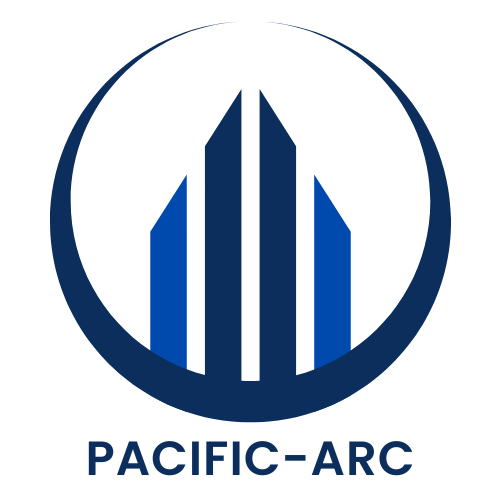Buying a home is a big deal and it often feels like a rollercoaster ride with more twists and turns than a soap opera. But fear not, because home purchase financing is here to save the day! It’s like having a superhero in your back pocket, ready to swoop in and help you snag that dream house without breaking the bank.
Table of Contents
ToggleOverview of Home Purchase Financing
Home purchase financing involves various options that help buyers acquire real estate while balancing their financial capacity. Mortgages serve as the primary form of financing, allowing individuals to borrow funds to purchase a home. Fixed-rate mortgages maintain stable interest rates throughout the loan’s term, providing predictability in monthly payments. Adjustable-rate mortgages start with lower rates but can fluctuate, resulting in variable monthly costs.
Alternative financing options include government-backed loans like FHA, VA, and USDA loans. FHA loans require lower down payments and cater to first-time buyers. VA loans offer benefits to veterans and active-duty service members, including zero down payment options. USDA loans support rural property purchases and also entail minimal down payment requirements.
Understanding credit scores is essential in the financing process. Higher credit scores lead to better interest rates and terms. Borrowers can take steps to improve scores before applying for loans, such as paying down debt or making timely payments on existing obligations.
Choosing the right lender impacts the overall financing experience. Lenders vary in terms of fees, interest rates, and customer service. Comparing offers from multiple institutions helps buyers secure the best financing terms.
A crucial component of financing includes understanding the total cost of homeownership. This encompasses mortgage payments, property taxes, insurance, and maintenance costs. These factors should be calculated to avoid financial strain in the long run.
Each of these components plays a vital role in home purchase financing, making it essential for buyers to conduct thorough research and consider their unique financial situations.
Types of Financing Options

Home purchase financing offers various options to meet different buyer needs. Each type has unique features and benefits, allowing individuals to choose the best fit for their situation.
Conventional Loans
Conventional loans represent a popular choice for many buyers. These loans are not backed by the federal government, making them adhere to stricter credit and income requirements. Lenders often offer fixed-rate or adjustable-rate terms, allowing borrowers to select based on their financial stability. Most conventional loans require a minimum of 3% down payment, although larger down payments can lead to lower monthly payments and better interest rates. Many buyers appreciate the flexibility in repayment plans, making conventional loans an attractive option.
FHA Loans
FHA loans cater specifically to first-time buyers and those with lower credit scores. Backed by the Federal Housing Administration, these loans offer lower down payment options, starting at 3.5%. Borrowers can benefit from more lenient credit requirements, making homeownership accessible for many. FHA loans often come with competitive interest rates, further easing the financial burden on buyers. Additionally, mortgage insurance remains necessary for the life of the loan, impacting overall costs.
VA Loans
VA loans are exclusively available for veterans, active duty service members, and certain military spouses. Supported by the U.S. Department of Veterans Affairs, these loans typically require no down payment or private mortgage insurance, making them very appealing. Lenders offer competitive interest rates, which can significantly lower monthly payments. Borrowers also enjoy the benefit of flexible credit standards. These loans assist countless veterans in achieving their dream of homeownership while honoring their service.
USDA Loans
USDA loans serve individuals looking to buy homes in rural and suburban areas, promoting access to affordable housing. Backed by the U.S. Department of Agriculture, qualifying buyers can secure loans with zero down payment. Borrowers must meet certain income limits, which typically should not exceed 115% of the area’s median income. Low mortgage insurance costs further enhance the affordability of USDA loans. This financing option plays a critical role in bringing homeownership within reach for many families living in eligible locations.
Factors to Consider When Financing a Home
When financing a home, several key factors influence the process. Buyers must assess their financial health and long-term goals to make informed decisions.
Credit Score
Credit scores significantly affect financing outcomes. A score above 740 often leads to better interest rates and loan options. Lenders view higher scores as indicators of lower risk, which may translate into lower monthly payments. Regularly checking a credit report for errors can also improve one’s score. Maintaining low credit utilization can enhance overall creditworthiness.
Down Payment
The down payment represents a vital aspect of home financing. Most conventional loans require at least 3% down, while FHA loans may accept as low as 3.5%. VA and USDA loans commonly provide zero down payment options, especially for eligible veterans and rural buyers. A larger down payment reduces monthly mortgage costs and might eliminate private mortgage insurance. Assessing personal savings can determine the most viable down payment option.
Interest Rates
Interest rates directly impact the total cost of a mortgage. Fixed-rate mortgages offer stability, with interest rates remaining constant throughout the loan term. Conversely, adjustable-rate mortgages initially provide lower rates that can change based on market conditions. A difference of just 1% in interest rates can significantly affect monthly payments and total interest paid over the life of the loan. Monitoring market trends helps buyers time their financing effectively.
Loan Terms
Loan terms dictate the repayment timeline and structure of the mortgage. Common terms include 15 and 30 years, which suit different financial situations. Shorter terms typically result in higher monthly payments but less interest overall. Longer terms offer lower monthly payments, albeit with higher total interest costs. Buyers should evaluate their long-term plans and budget constraints when selecting the right loan term. Understanding these terms ensures that prospective buyers make educated choices.
The Application Process
Navigating the application process can seem overwhelming. It consists of several key steps to secure home purchase financing.
Pre-Approval
Pre-approval involves a lender assessing a buyer’s financial situation before they start house hunting. Buyers submit financial documents including income statements and credit history for review. This assessment provides a clear estimate of the loan amount they qualify for. Securing pre-approval enhances credibility when making offers on homes. It also clarifies budgets, helping buyers know what to expect regarding monthly payments.
Documentation Required
Documentation is crucial during the application process. Essential documents typically include W-2 forms, pay stubs, bank statements, and tax returns from the past two years. Lenders may also request information about assets and debts to evaluate the buyer’s financial health. Providing complete and accurate documentation expedites the process. It’s advisable for buyers to organize these documents early to avoid delays later on.
Closing Process
Closing marks the final step in home purchase financing. During this stage, buyers review and sign numerous documents, including the mortgage agreement and transfer of ownership. Buyers should expect to pay closing costs, which can range from 2% to 5% of the loan amount. Once documentation is signed and funds are transferred, the deed is recorded. At this point, buyers officially become homeowners, completing the financing journey.
Common Mistakes to Avoid
Many buyers overlook their credit scores before applying for financing. A higher score significantly improves the likelihood of securing favorable interest rates. Ignoring this factor can lead to higher monthly payments and increased overall costs.
Samantha missed an opportunity because she failed to compare lender offers. Different lenders present various fees, interest rates, and customer service levels. Taking time to shop around can yield substantial savings.
Another common mistake involves underestimating the total cost of homeownership. Buyers often focus solely on mortgage payments, neglecting additional expenses like property taxes, insurance, and maintenance. Preparing for these costs ensures a sustainable financial future.
Some individuals skip the pre-approval process, which provides a clearer financial picture. Obtaining pre-approval enhances credibility and helps determine a realistic budget for home purchases. It streamlines the entire financing process.
Additionally, jumping into adjustable-rate mortgages without understanding them poses risks. Initial lower rates may seem tempting, but fluctuations can lead to significant increases. Fixed-rate mortgages guarantee stability, making them a preferred option for many.
Finally, ignoring the importance of down payments weakens financial planning. A larger down payment can lower monthly mortgage costs and eliminate private mortgage insurance (PMI). Buyers should evaluate their savings to determine the most advantageous down payment strategy.
Buying a home involves numerous decisions. Avoiding these common mistakes can lead to a smoother financing experience and better financial outcomes.
Navigating home purchase financing can be a daunting task but understanding the available options is key to making informed decisions. By recognizing the importance of credit scores and comparing different lenders, buyers can enhance their chances of securing favorable terms.
It’s essential to consider not just the mortgage but also the overall costs of homeownership to ensure long-term financial stability. With careful planning and awareness of common pitfalls, prospective homeowners can embark on their journey with confidence, ultimately leading to a successful and rewarding experience in finding their dream home.





